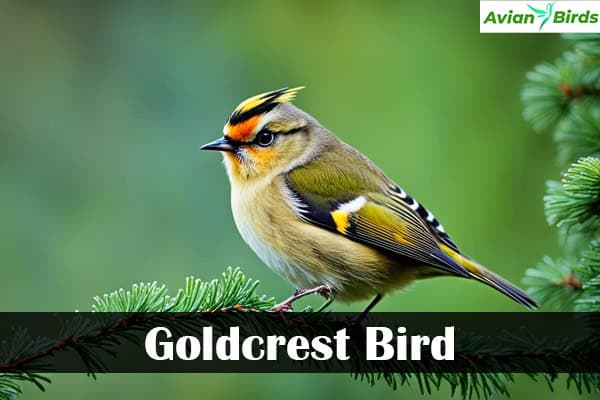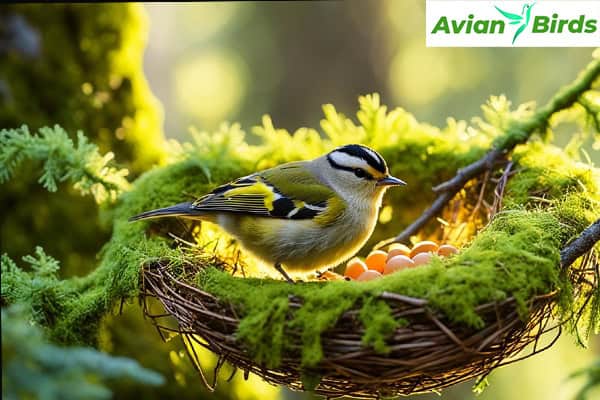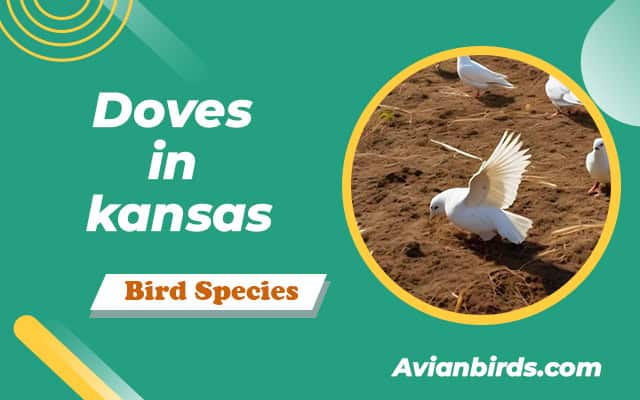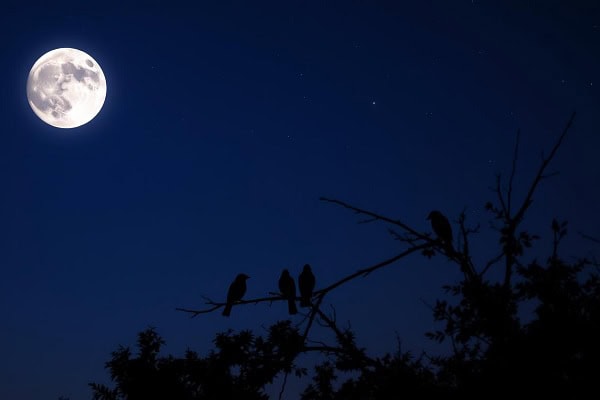Goldcrest Bird Guide: Tiny Bird, Big Heart
Have you ever wondered how a tiny bird can grab so much attention in birdwatching? The charming goldcrest, known as Regulus regulus, is Europe’s smallest bird. It captures our hearts with its bright personality and interesting behaviors. Let’s dive into the life of this lovely bird and learn how it survives and breeds in different places. Whether you love birds or just enjoy learning about them, the goldcrest’s world is sure to amaze you.
~Here We’ll Discuss The Goldcrest Bird And His Identification~
Fun Facts About Goldcrest Bird
- Scientific Name: Regulus regulus
- Lifespan: 8 months (longest recorded: 7 years)
- Length: 3.5 inches (9.2 cm)
- Wingspan: 5.7 inches (14.5 cm)
- Weight: 0.20 ounces (5.8 grams)
- Family: Regulidae
The Fascinating World of the Goldcrest
The goldcrest is a captivating bird that thrives in various habitats. It loves the woods, especially those with conifers. It also lives in mixed forests, gardens, and plantations. These birds move between these places, showing how adaptable they are.
Their high-pitched song is a joy to hear, adding to the beauty of nature. Despite being small, the goldcrest is important in its environment. It forages with other small birds, showing how they work together.
This behavior highlights their social nature and need for community. It makes us appreciate nature’s complexity more.

A Closer Look at the Goldcrest’s Appearance
Looking closely at the goldcrest shows us its beauty and unique traits. Its size is key to its delicate look. It’s one of Europe’s smallest birds, about 9cm long and weighing around 5-6g, similar to a 5p coin. Its wingspan is 14cm, making it very agile and light.
Size and Weight
The goldcrest’s size is perfect for its environment. Its light weight helps it fly well. It can easily move through thick plants to find food and shelter.
Distinctive Features
The goldcrest stands out with its bright colors. Males have a vibrant crown stripe with an orange center. Females have a bold yellow stripe. Their colors, from olive to buff-white, make them both beautiful and camouflaged.
Habitat and Distribution
The goldcrest loves to live in coniferous forests and mixed woodlands. These places give them everything they need to survive and thrive. They find shelter and food among the tall trees, making these environments perfect for them.
They also live in urban gardens that feel like their natural homes. This shows how well they can adapt to different places.

Preferred Environments
Goldcrests prefer places full of conifer trees. These trees provide them with shelter and food. Seeing them in the wild adds life to the forests.
They can live in many different conditions, making them very interesting to watch.
Global Range
Goldcrests live all over the world, from Northern Europe to the Himalayas and Japan. Their wide range shows how well they can adapt. They make long journeys, like crossing the North Sea, which is amazing to see.
In some seasons, they travel from Scandinavia to the UK. This shows their adventurous nature and strong bond with different ecosystems.
The Behavior of the Goldcrest
The goldcrest is a fascinating bird that captures the interest of bird lovers and nature enthusiasts. They live in social groups, which is key to their survival. These birds often join forces with other woodland birds to find food, especially when food is scarce.
Social Interactions
Social interactions are crucial for goldcrests. They travel in groups for safety and to find food. Being with other birds helps them in their search for food. Together, they can cover more ground and find more insects, fruits, and other important food sources.
Foraging Techniques
Goldcrests have unique ways of foraging. Their small size lets them move easily among the branches. They can reach into small spaces to get to insects like spiders and aphids. This shows how adaptable and clever they are in finding food in the wild.
Goldcrest Migration Patterns
The Goldcrest’s migration is truly amazing. Every year, thousands of these small birds travel from Northern Europe to the UK. They make this trip between late August and early November. Watching them arrive is a highlight of autumn.
In spring, from March to April, Goldcrests head back to their breeding grounds. This journey shows their strength and ability to adapt. Historically, people thought they rode on the backs of bigger birds. But now, we know they can fly over vast waters alone.
Breeding Habits of the Goldcrest
Goldcrest breeding is quite fascinating. These tiny birds build unique spherical nests. They use lichens, cobwebs, moss, and hair for the nest. These nests are hidden in conifer branches at various heights for safety.

Nesting Preferences
Goldcrests pick their nesting spots carefully. They prefer conifers for cover and easy access. Their nests blend in well, making them hard to see for predators. This shows how well they adapt to their surroundings.
Clutch Size and Egg Development
A typical clutch has 6 to 12 eggs, averaging 9 to 11. This helps them increase their chances of raising a successful brood. The eggs hatch after about 16 days of incubation by the female. After hatching, the female may start a second clutch while the male cares for the first brood.
Dietary Needs of the Goldcrest
The goldcrest has fascinating eating habits that show its important role in nature. It mainly eats small insects, which is key to its survival. These birds love to eat spiders, moth eggs, and other tiny creatures they find around them.
They play a big part in keeping insect numbers in check. This helps keep their living spaces balanced and healthy.
Insectivorous Diet
Goldcrests eat insects to live and reproduce well. Their small size and light build let them search for food in tight spots. They sit at the end of branches to catch tiny insects, which give them the energy they need.
Foraging Locations
Goldcrests live in different places, from deep forests to city parks. They use their great foraging skills in these spots. We see them flying between branches, looking for food in leaves and bark. This keeps them fed and helps the ecosystem stay healthy.
Goldcrest Vocalizations
The goldcrest is known for its small size and amazing sounds. From late winter to early summer, we hear their high-pitched calls. These sounds are like sweet, jingling songs that fill the forest.
These tiny birds are very social, and their sounds show this. They use their high-frequency calls to stay connected with others and find mates. But, their calls are so high that older people might not hear them. This makes us realize how much we might miss out on nature’s secrets.
Listening to goldcrest sounds can make us appreciate them more. These small birds may be easy to miss, but their songs are a big part of nature’s music. By paying attention to these sounds, we connect more with the wild and see the beauty that’s often missed.






